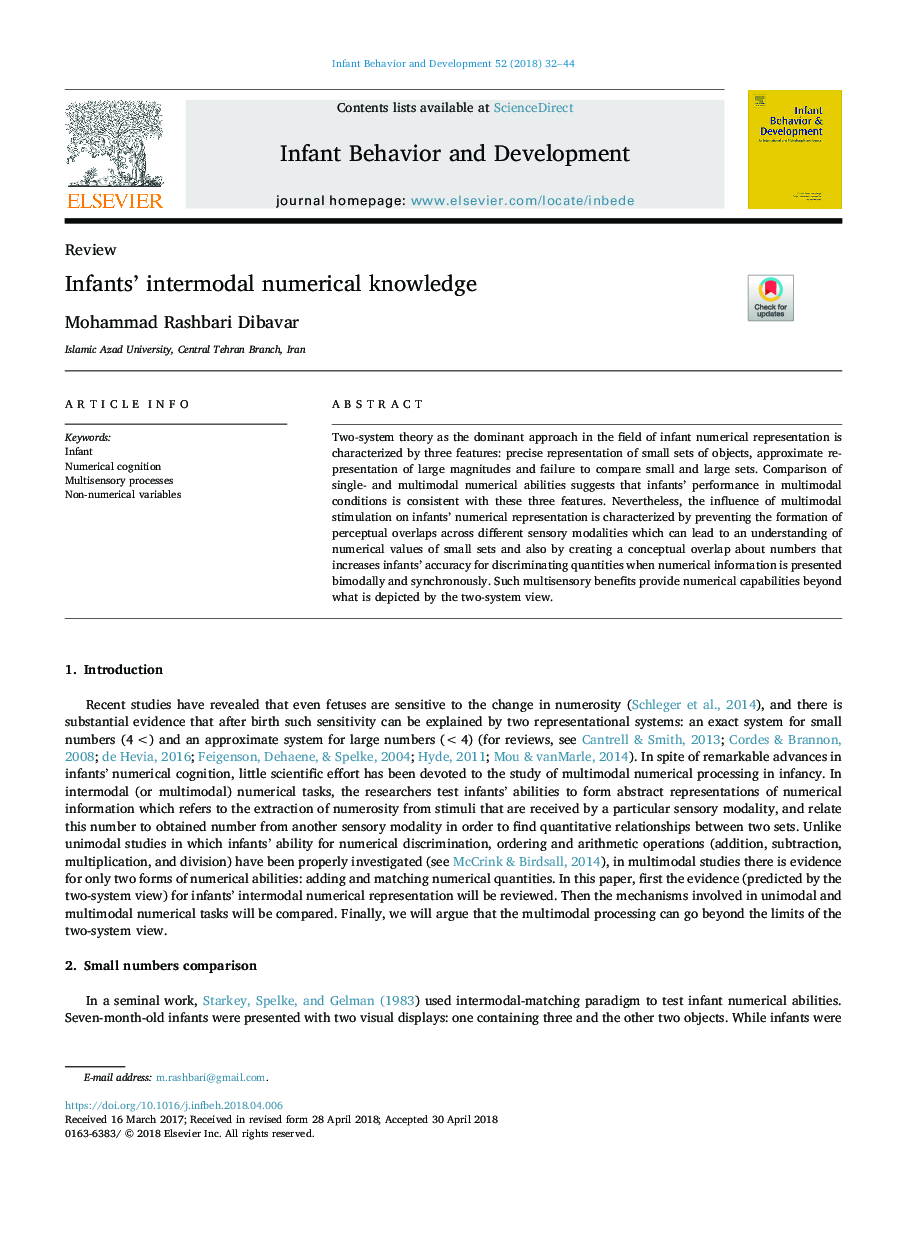| Article ID | Journal | Published Year | Pages | File Type |
|---|---|---|---|---|
| 7272834 | Infant Behavior and Development | 2018 | 13 Pages |
Abstract
Two-system theory as the dominant approach in the field of infant numerical representation is characterized by three features: precise representation of small sets of objects, approximate representation of large magnitudes and failure to compare small and large sets. Comparison of single- and multimodal numerical abilities suggests that infants' performance in multimodal conditions is consistent with these three features. Nevertheless, the influence of multimodal stimulation on infants' numerical representation is characterized by preventing the formation of perceptual overlaps across different sensory modalities which can lead to an understanding of numerical values of small sets and also by creating a conceptual overlap about numbers that increases infants' accuracy for discriminating quantities when numerical information is presented bimodally and synchronously. Such multisensory benefits provide numerical capabilities beyond what is depicted by the two-system view.
Related Topics
Life Sciences
Neuroscience
Behavioral Neuroscience
Authors
Mohammad Rashbari Dibavar,
